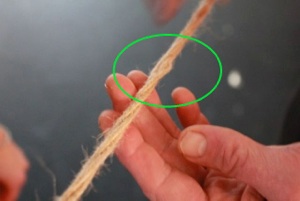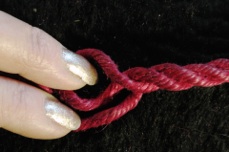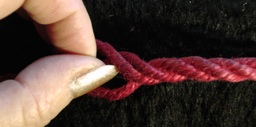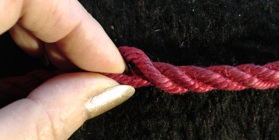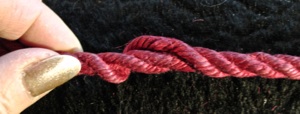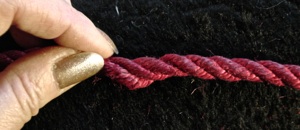Fixing High Stranding

The easy way to fix this is to begin at one of the ends of the rope, without untying the end knots.
if one or several strands got pulled, and are no longer following their normal path, the rope will look like the samples below.
"Massaging" a rope can solve the problem if the strand is skipping only a few revolutions. If the problem is more serious, compressing the rope between your fingers from one end to the other to “iron out” the problem will not be enough to fix the issue, because at that point you will have a two-fold problem to fix:
-
• a strand skipping a revolution in one or more places
-
• while that strand is too short in some segments of the ropes, it is too long in other places.
So if you end up with what seems to be a longer strand, and thus cut off the excess bit, this will leave your rope with 2 untouched strands, of equal length, and a shorter one, and no way to re-balance the 3 strands together properly...
Your best choice is to carefully re-position each strand in its rightful place in the helix formed by the 3 strands, making sure the length and tension of all strands are equal and the rope well balanced.
The best way to achieve good results using this technique is to work only a few centimeters at a time. See visual summary below.
Once you have smoothed out the segment you just worked on to make sure it’s balanced, then move on to the next 5-6 centimeters of rope, even if you don’t see any problems. The reason to do so is that you are rebalancing the whole rope from end to end. Applying that procedure too quickly means you may miss a skipped revolution, which in turn means you’ll have to re-check the whole length of rope, undoing the previous faulty rebalancing as you go along, and ending up having to unnecessarily repeat the whole process.
in some extreme cases, a strand can also be partially untwisted, which will add to the severity of the damage - in that case, that strand will also be longer than the others, but that will be due to the amount of un-twisting. When the amount of un-twisting is not too great, you can try to manually re-twist the strand segment, but beyond a certain point, the only useful option will be to totally unlay the rope, un-twist the strands and go through the steps of making proper and balanced twisted strands, then counter-twist them to re-lay the rope.
High-stranding may also occur when closing the rope during the fabrication process; if the 3 strands are not of equal length, one of them may skip a revolution and the defective segment will look like this:
At that point, it’s quite easy to fix. As the rope is not fully closed, slightly releasing the tension allows to reposition the faulty strand correctly, and resume the closing process.

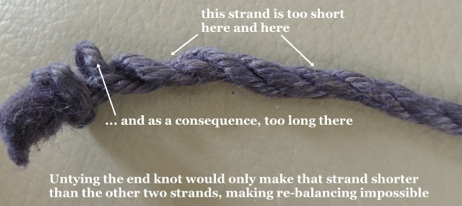
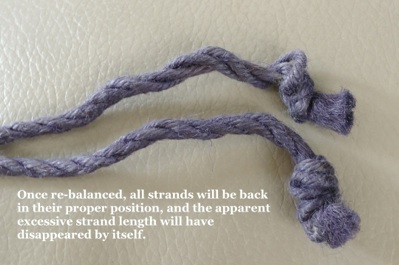

Example of a rope showing an extreme case case of high-stranding, before and after repair.
This rope is a rope bought in Japan, and is more prone to high-stranding due to the construction of the strands.
Visual Summary
-
Carefully open the rope segment so you see which precise strand is having a problem
-
-
-
-
Reposition the strand in the helix
-
-
-
-
-
As you notice, the strand is back in the right place, but its length is excessive.
-
-
Beginning on the right side of the area, smooth out the 3 strands. The excess strand length is reabsorbed into the rope.
